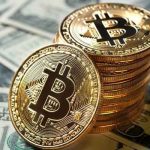#onshoring #reshoring #supplychain #economy #China
“Quaint, Yes? Mr. Biden’s Secretary of Transportation Pete Buttigieg’s office reportedly said that he has been on paid leave since the middle of August following the birth of his 2 children.” — Paul Ebeling
Pete Buttigieg has been MIA as Democrats continue to debate its $1.2-T infrastructure plan, with House and Senate moderates resisting the more progressive policies in the legislation.
Now then
As entire areas of industrial output were shuttered in the wake of the VirusCasedemic, suddenly arguments for re-onshoring the point of production, or at least diversifying it, gained a new validity. It was no longer simply about cost savings but the basic ability to produce during times of such momentous disruption. Bringing supply chains back onshore, further regionalizing, and dual sourcing, using 2 suppliers are all now being considered by every type of company.
For a generation, the Long Beach and Los Angeles harbors in California handled more than 40% of all container cargo headed into the US and epitomized the power of a globalizing economy.
Today, the ships still dock, but they must wait in a seemingly endless line of as many as 60+ vessels, sometimes for as long as 3 wks the worst delays in history, and the price per container has risen to as much as 10X its cost before the VirusCasedemic. This shipping chaos is projected to last through Y 2023.
A VirusCasedemic-driven shortage of parts and labor has combined with a congested transport system to create an inflationary spike, with shipping rates 2Xing on some routes.
The chaos on the ground may not disturb the lifestyles of the tech and financial elites, but it is hurting the middle and working classes, the groups most threatened by surging inflation.
The supply chain disaster has shown the existence of crippling economic dependence, particularly on China, in high-income countries.
Today, whole industries in the West rely on China for finished products and Key components. When China decides not to supply these parts, whole industries suffer debilitating supply chain shortages.
The notion of a rational, self-regulating market system is unraveling and may be a sign of the death of this neoliberal era.
For many, many yrs, business consultants have persuaded businesses large and small to move their production to China in search of cheaper costs.
This has had a devastating effect in the US, where between Ys2004 and 2017, the share of world manufacturing shrank from 15 to 10% while reliance on Chinese inputs 2X’d.
The trade deficit with China, according to the Economic Policy Institute, has cost as many as 3.7-M American jobs since Y 2000.
In the face of these trends, the general response of the Western elites has been “Why worry?” Reflecting the ideological leanings of the American establishment.
Christina D. Romer, the former head of the Council of Economic Advisers in the Hussein Obama administration, dismissed concerns about manufacturing policy as nostalgic “sentiment,” declaring, “American consumers value healthcare and haircuts as much as washing machines and hair dryers.”
But unlike the local hair salon, the market for washing machines is national and global and these goods have to be transported, often over great distances.
A factory that makes parts for washing machines in a city, state, or region draws money to the local community. As manufacturing has 1 of the highest multiplier effects of any sector, and just 1 manufacturing job in a community generates many other direct, indirect, and induced jobs, both locally and elsewhere.
The VirusCasedemic playing out across the industrial landscape, reflects the fracturing of supply chains over several decades. A generation of politicians, economists, and pundits in Western countries have paid little attention to nurturing the “industrial commons,” which encompass production, research and development, supply chains, embedded process development, and engineering capacity.
This yr, auto production was curtailed due to a worldwide shortage of semiconductors tied to a recent slowdown in Taiwan.
America’s push into renewables threatens to further bolster China’s dominance of the solar panel industry and production of the essential metals needed to produce “clean” energy for EVs which few people want.
The West’s trade deficit now extends even to high-tech products. When companies move production abroad, they often shift research and development too.
Camille Farhat, a former C-suite executive at General Electric, Baxter, and Medtronic, and now CEO of Michigan-based manufacturer RTI Surgical says that many products, including medical supplies, can be produced domestically.
And that she hopes the VirusCasedemic will convince other business leaders to stop “destroying the supply ecosystem” that makes production possible. There are signs that some are heeding her advice.
There are signs of some change C-suite that predating this current chaos.
McKinsey and Company surveyed supply chain executives last yr and found that nearly all respondents believe their supply chains are too vulnerable.
And according to March 2020’s Thomas Industrial Survey, COVID-19 supply chain disruptions aggravated an appetite for locally sourced materials and services as 70% of firms surveyed said they were “likely” or “extremely likely” to reshore in the coming yrs.
Plus, a UBS study revealed that as many as 60% of firms now producing in China have moved or are planning to move.
Of course, such moves will be resisted by companies that have grown hopelessly dependent on far-flung supply chains and no longer possess the skills to make their own products.
Some analysts suggest that large-scale reshoring to North America will require strong government action.
There are reasons for optimism.
President Trump’s (45) tariffs may not have done much to revive US manufacturing, but the Reshoring Initiative’s Harry Moser sais that the annual number of jobs returning from offshore has increased from 6,000 in 2010 to over 400,000 in Y 2019.
Cumulative jobs brought back represent about five percent of the United States’ total industrial employment. In Y 2019, for the 1st time in 10yrs, the percentage of manufacturing goods imported to the US dropped, notes a recent Kearny study, with much of the shift coming from East Asia.
The supply chain chaos has made plain the grave threat posed by China’s rise. In the early stages of China’s embrace of capitalism, the country’s industrial push was widely welcomed as a triumph of liberal globalization.
It was believed that China just wanted to succeed, and would do so in a manner at least a bit congruent with Western values. Its trajectory was expected to follow that of Japan, Singapore, or SKorea, all of which lack China’s military power, both in population and resources.
But under the leadership of Xi Jinping, China has nurtured an economy that works in a profoundly different way to those of capitalist countries.
In the West, profits and individual wealth accumulation drive economic progress.
And although Chinese people may want to get rich, the primary goal of the CCP is to bolster the Middle Kingdom’s global power and influence. In China, the regime employs its power to restrain and even imprison the country’s entrepreneurs if they defy its authority. And social media is used as a political tool to promote China’s ascendency, even on ostensibly frivolous sites like Tik Tok.
China’s agenda has stretched beyond consolidating its hold on existing industries. Now it seeks to dominate such fields as AI, robotics, bio-medicine, and the dominance of space that will likely shape the future economy.
Economist Yi-Zheng Lian argues that stealing technology is now encouraged as China becomes a “nation of patriotic thieves.” The basic rules that underpin capitalist economies simply do not much matter..
China is also determined to promote its alternative authoritarian model of governance, particularly in developing countries. This drive could accelerate with China’s military expansion, and may yet include the conquest of Taiwan, which is now the world’s leader in semiconductor technology.
The tiny island nation is now subject to aerial incursions from the Mainland and could be blockaded. The Taiwan Semiconductor Manufacturing Company’s decision to build a $12-B new plant in Arizona could be critical to assuring secure supplies for America’s manufacturers.
Revitalizing our “industrial commons” requires bold new initiatives and measures from our economic past, which saw some very successful efforts to spark industrial growth during WWII and the Cold War, as 2 Harvard researchers have suggested, “Believing in the power of markets does not preclude the judicious use of appropriate government policies.”
While rejecting President Trump’s approach, Mr. Biden’s admin has continued to pursue many of his themes, including proposals to boost the domestic semiconductor and steel industries.
The Biden plan would spend $300-B on R&D to revitalize American industrial competitiveness and invest in alternatives to 4yr colleges, trade schools, apprenticeships, and community colleges.
A more ambitious part of the plan involves the use of taxes, subsidies, and public-private partnerships to encourage companies to retain the capacity to make critical supplies during a national emergency.
Reshoring will require tariffs and bans, + incentives, including tax policies that encourage industrial investments, loans and loan guarantees, grants, public-private partnerships, and supportive educational and physical infrastructure. Additionally, steps could be taken to promote the development of critical rare metals outside of China.
Western countries could also justify shifts away from China on environmental grounds.
For businesses and consumers, attempts to move out of China could cost as much as $1-T, but would detach firms from the country’s notoriously high carbon supply chains, which emit more greenhouse gasses than the United States and the European Union combined. Indeed, according to one recent study, China is home to 23 of the 25 largest cities in terms of GHG emissions.
Addressing America’s supply chain vulnerabilities is not just good policy but also good politics.
Strong efforts to counter China’s mounting challenge in science and technology, such as the US Innovation and Competitiveness Act, passed the Senate by a wide margin.
A recent survey by the left-leaning Center for American Progress found that far more Americans prioritize protecting US jobs and reducing illegal immigration than progressive goals like combatting climate change and improving relations with allies.
Despite the much-lauded consumer benefits of low-cost imports, the vast majority of Americans seem to be willing to pay higher prices that would come from moving production out of China, a fact that has encouraged retailers such as Walmart (NYSE:WMT) to seek out more domestic suppliers.
The current supply chain chaos can only reinforce these trends. Economic boycotts of Chinese goods and firms, a successful example of which is the US attempt to thwart telecommunications giant Huawei may be a indicator of things to come in strategically Key areas.
The Middle Kingdom is more vulnerable than widely thought.
China’s financial system is feeling the impact of massive unwise investments in high-rise offices and residential towers. A rapid decline in the workforce by over 200-M by Y 2050, a continuing low birth rate, and growing class conflict pose challenges and provide opportunities for competitors.
More critically, Chinese regime controls could derail innovation by blocking data and analysis from the rest of the world is not the route to information-era dominance.
Free countries will trade with autocracies, but the focus needs to be on maintaining primary supply chains with partners who essentially conform to the rule of law and are not seeking to establish a global hegemony.
What is needed is a series of alliances with likeminded countries that generally follow liberal capitalist values and legal norms. This can be seen in the new defense pact between the US, the UK, and Australia, with potential growing ties to Japan, SKorea, and India.
In the long run, capitalist order can only be maintained by a common belief in basic principles of fairness and legality.
The ships anchored at sea, some empty supermarket shelves and higher prices represent warning signs of a new and dangerous economic reality.
The People can either accept dependency as “the new normal” or address it directly, abandoning dreams in favor of approaches based on reality and greater self-reliance.
Have a healthy prosperous weekend, Keep the Faith!









